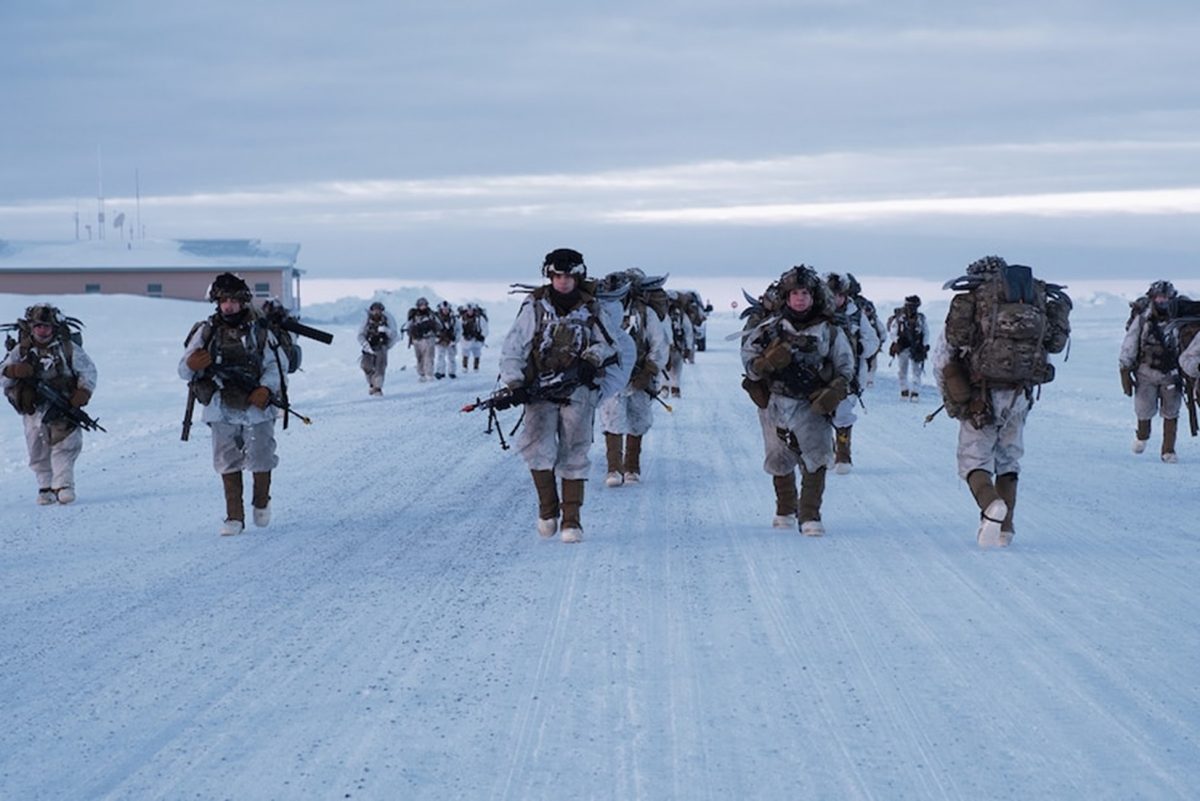In the 1980’s, I had the opportunity to sail aboard the Northwind, a U.S. Coast Guard icebreaker. Those assigned to modern icebreakers face a challenge more bleak than the icy weather: being dramatically outnumbered by Russians determined to control the region. Moscow has major forces, including at least 42 icebreakers to America’s two.
The Pentagon notes that “Russia, which accounts for a broad swath of Arctic Ocean coastline has increasingly sought to extend its influence in the region. China too, has increasingly sought to extend its influence in the region, declaring itself to be a ‘near-Arctic’ nation despite having no Arctic coastline.”
Russia has continued its expansion and modernization of Arctic military infrastructure. “The Arctic has long played a significant role in Russia’s security approach and economic calculations, and today is no exception,” said Amanda Dory, the acting undersecretary of defense for policy, at a recent Wilson Center gathering about the recently announced revamp of DOD strategy in the High North and why it is important for defense.
“Russia’s Arctic military capabilities have the potential to hold the U.S. homeland, as well as allied and partner territories, at risk.”
China and Russia are growing together and have held combined naval and airpatrols in the region. DOD continues to monitor this cooperation very closely. This was rather stunningly emphasized by the recent combined Moscow-Beijing bomber flight off the coast of Alaska.
The plan states that the United States seeks an Arctic region that is peaceful, stable, prosperous, and cooperative. In support of this national-level objective, DoD, in cooperation with Allies and partners2, “will pursue an end state that preserves the Arctic as a stable region in which the U.S. homeland remains secure and vital national interests are safeguarded.”
It directs that activities in the Arctic will be calibrated to reflect a “monitor-and-respond” approach that is underpinned by robust intelligence collection capabilities, security cooperation with our regional Allies and partners, and the deterrent value of DoD’s ability to deploy the Joint Force globally at the time and place of our choosing. This strategy guides DoD’s efforts to build and sustain this monitor-and-respond approach to the Arctic. Implementing this strategy will enable DoD to achieve our desired end state for the region, aligning with efforts to strengthen homeland defense, safeguard U.S. interests, and improve interoperability with Arctic Allies and partners while preserving focus on the pacing challenge of the People’s Republic of China (PRC) globally.
Read between those lines: “monitor and respond,” “Allies,” and “gathering intelligence” are all a way of admitting that the U.S. is far inferior militarily to our enemies in the High North.
Liselotte Odgaard, a senior fellow at the Hudon Institute noted earlier this year in a Foreign Policy
“it is clear that the [NATO] alliance remains ill-prepared against Russia’s military capabilities in the Arctic…”
While the addition of Finland and Sweden is seen by many as strengthening the west’s capabilities, the reality is that their forces are concentrated on deterring the Kremlin’s threats in the Baltic region.
Odgaard stresses that “No NATO member state has ice-strengthened ships with both anti-aircraft and anti-submarine capabilities. The United States, Canada, Denmark, Finland, and Sweden have prioritized capabilities designed for other theaters, such as the Indo-Pacific and the Baltic Sea regions. Iceland… has no standing army, only operates coast guard vessels. Norway has ice-strengthened coast guard vessels, but they are not designed for military operations…Russia’s nuclear submarines, which are capable of launching an attack on North America, can travel from the Barents Sea through the Bear Gap …without being detected.”
This is a dramatic, dangerous and vast threat to the U.S. homeland, one that cannot be resolved by mere words and plans.
